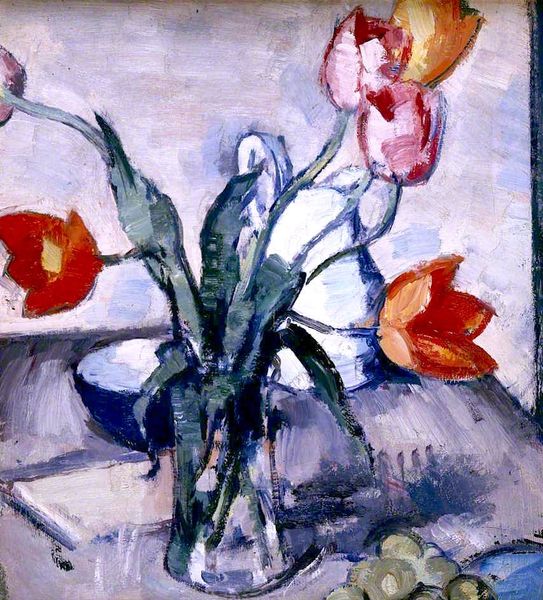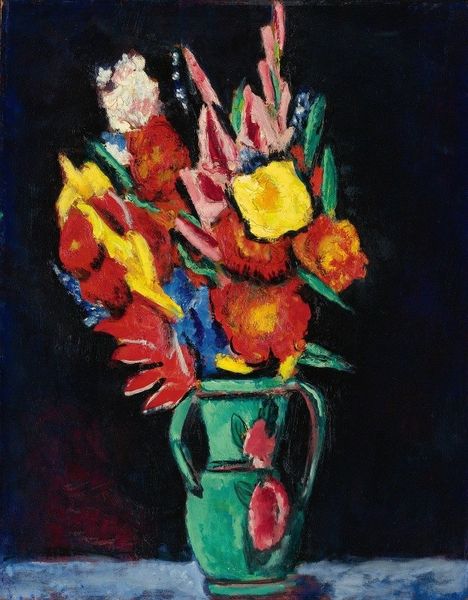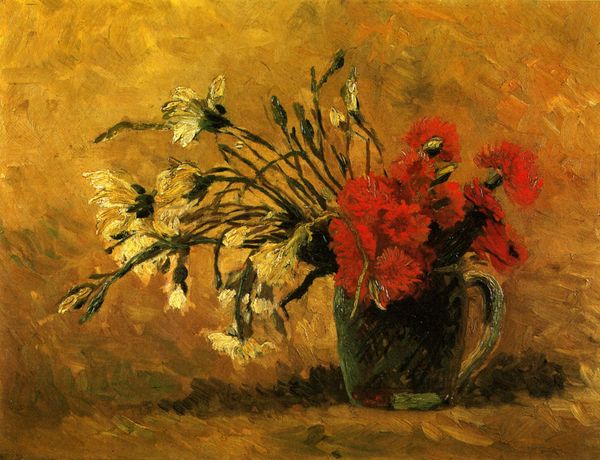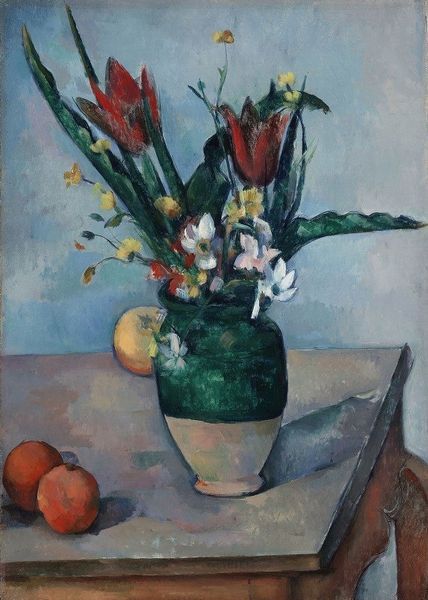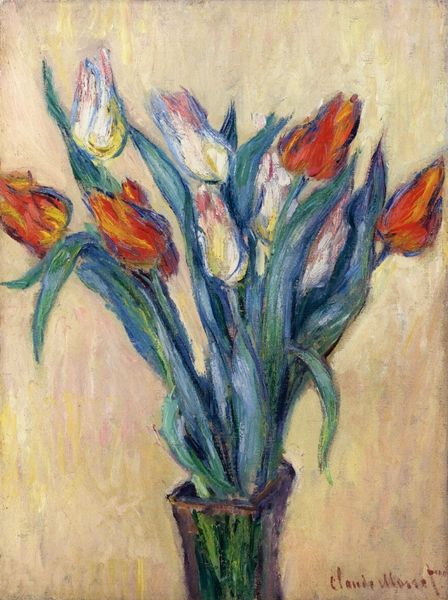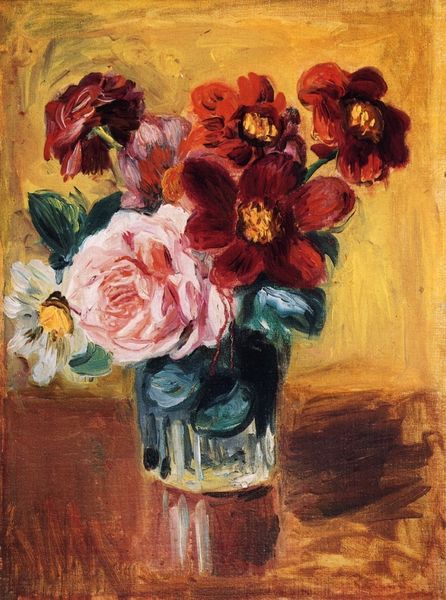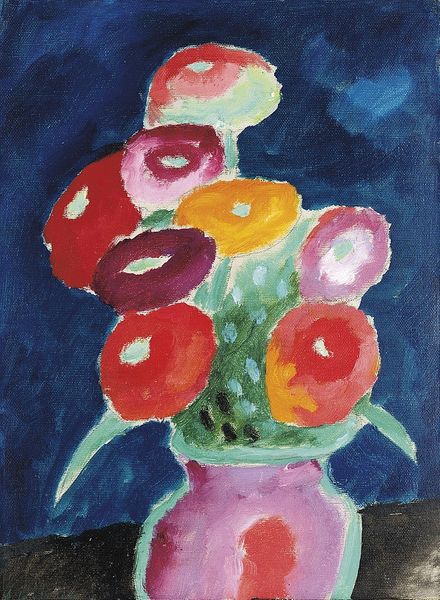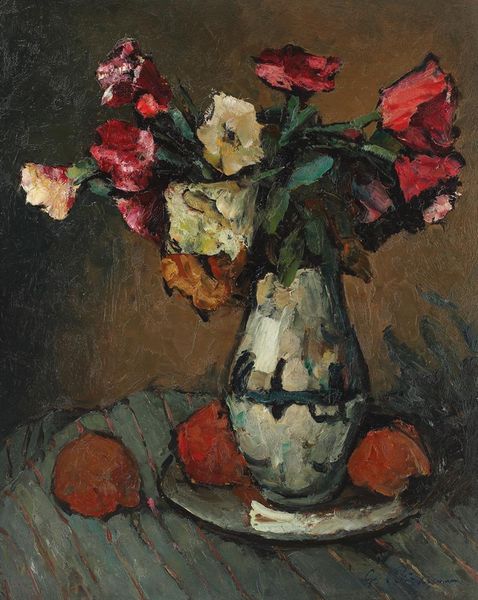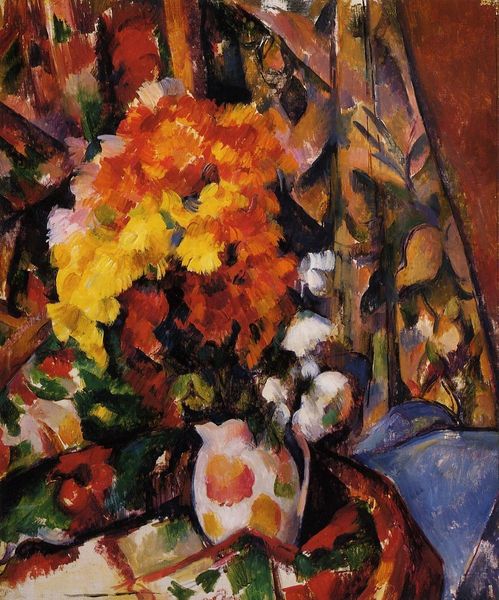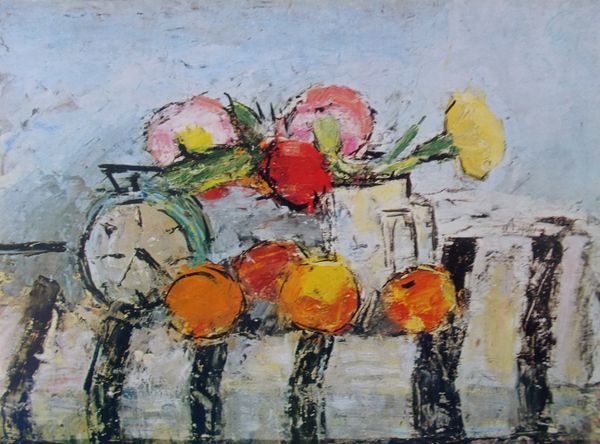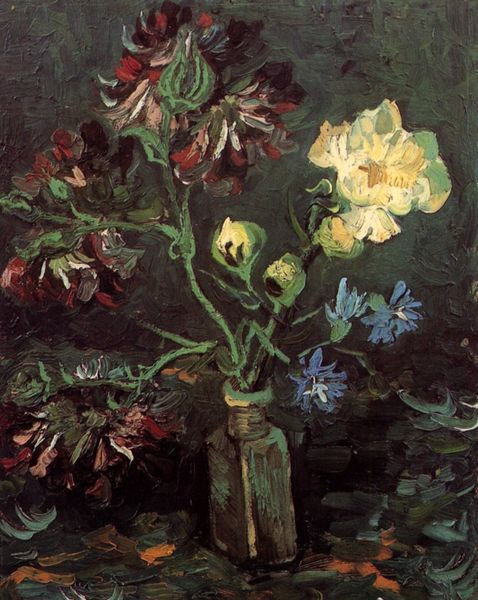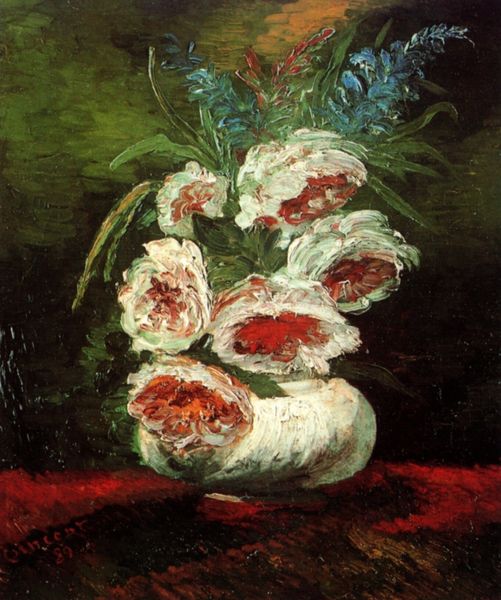
Dimensions: 72.5 x 42 cm
Copyright: Public domain
Editor: So, we have before us "Tulips in a Vase," painted in 1892 by Paul Cézanne. The thick, almost sculptural use of oil paint really grabs my attention. What do you see in terms of how Cézanne approached the materiality of his subject? Curator: For me, the fascination lies in how Cézanne uses the materiality of paint to almost deconstruct the traditional still life. Note how the brushstrokes aren’t about mimetic representation, but instead emphasize the process, the labor, of creating an image. Consider the implications: paint applied thickly, almost troweled on, shifting the focus from the depicted tulips to the act of painting itself. It questions the historical context of the consumption of floral paintings by the bourgeoisie, presenting a raw, less refined experience. Editor: That's interesting. So you're saying the way he uses the paint itself is almost a commentary on the art market? Curator: Exactly. He challenges the idea of art as a commodity, something passively consumed. The materiality demands attention. What is the significance of choosing something natural as subject matter in relationship to this artificial construct? Editor: I never really considered the social context in that way before, focusing so much on form. Curator: Think of how radical this was at the time, how much labor was needed for paint production. Editor: This has definitely changed my perspective on the work! Thanks! Curator: And mine as well, re-examining art historical narrative is a continuously insightful and evolving journey!
Comments
No comments
Be the first to comment and join the conversation on the ultimate creative platform.
